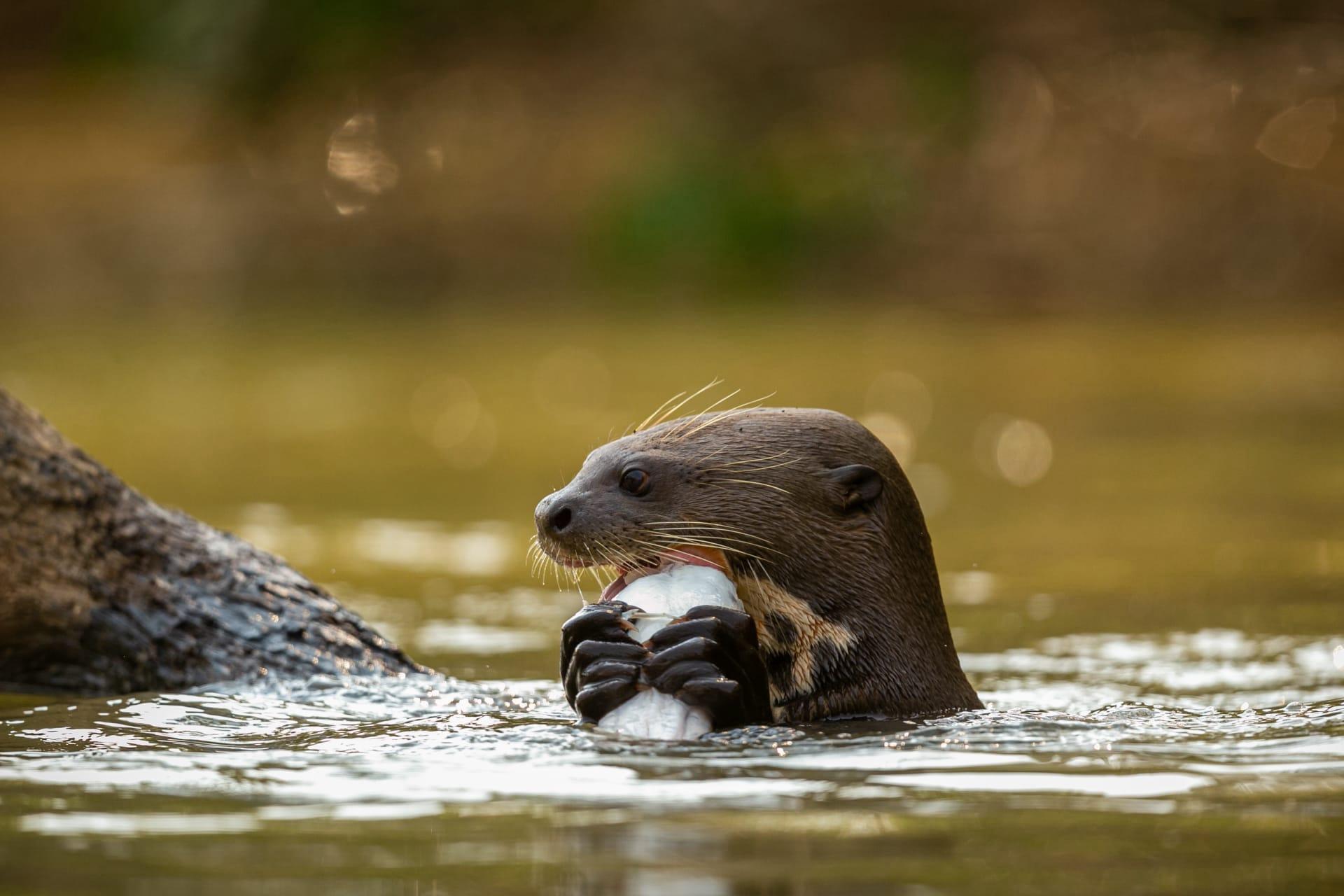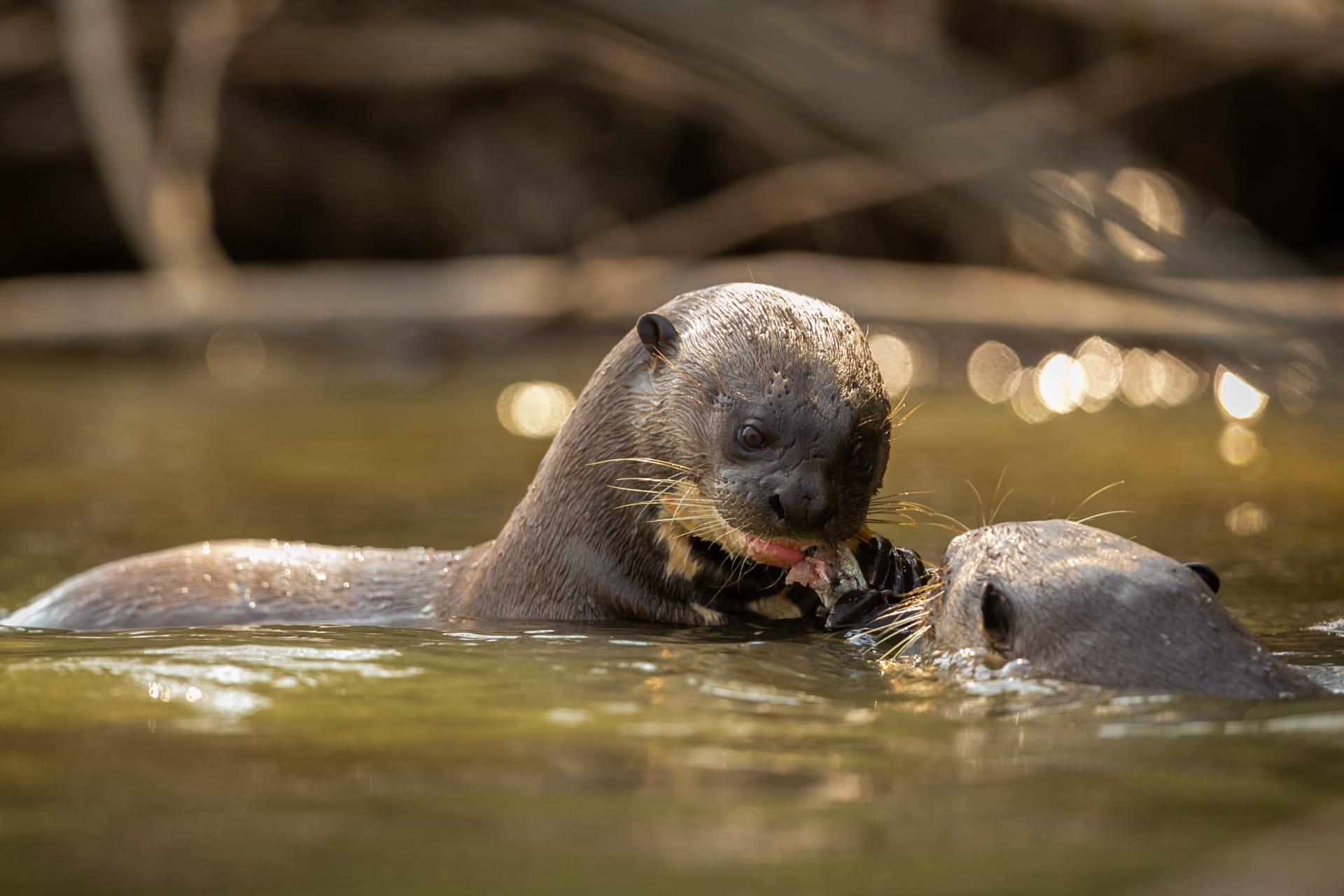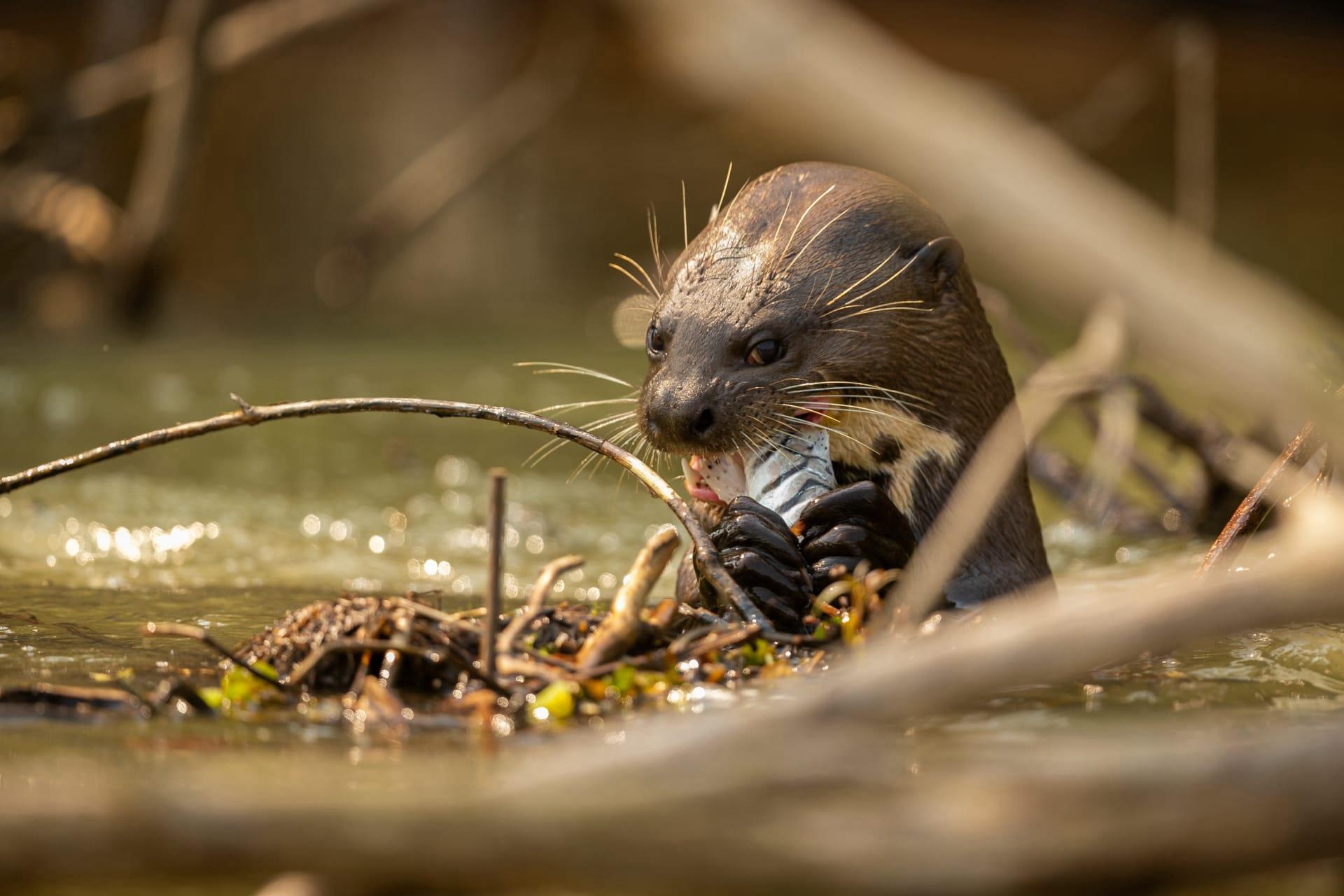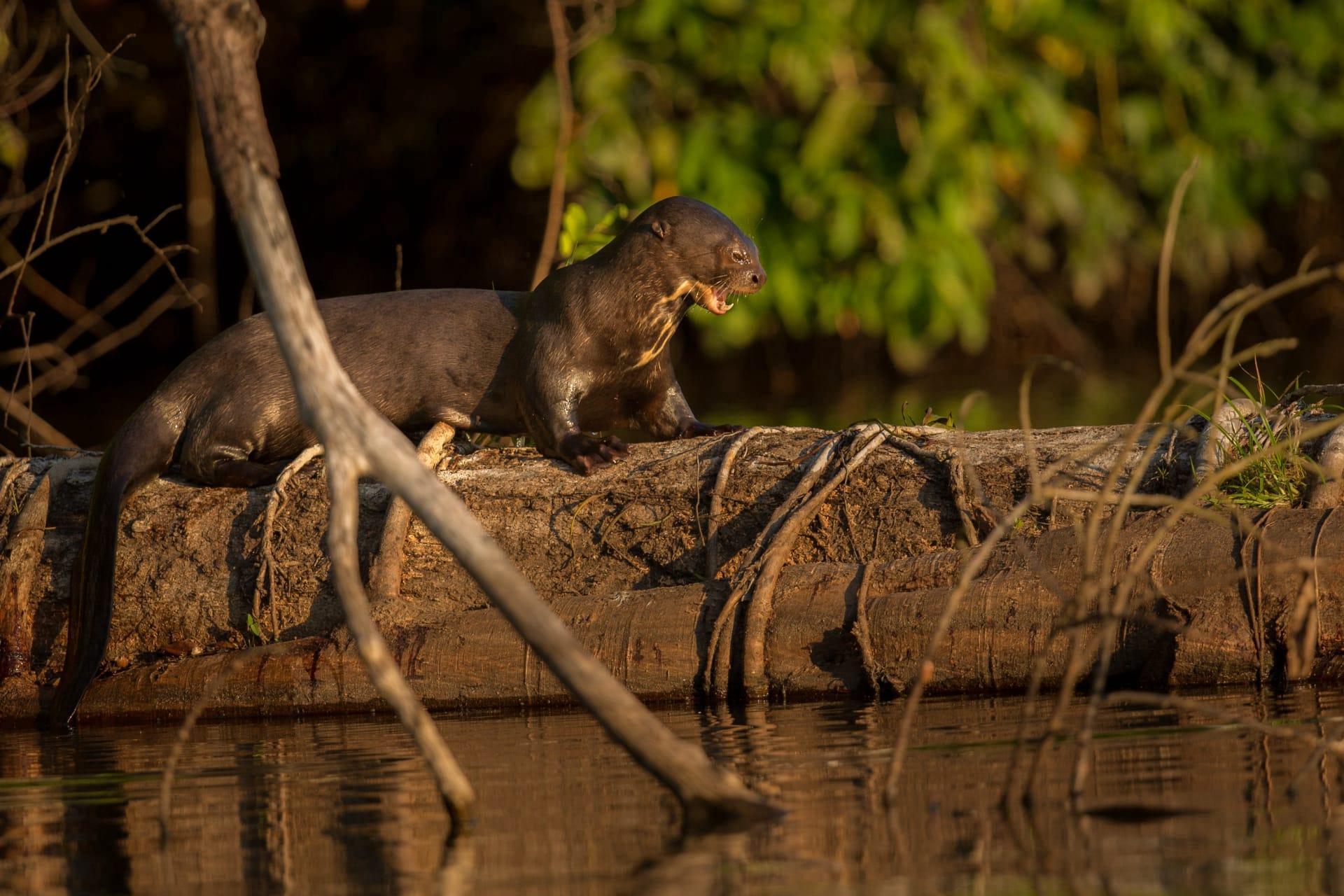Otter Characteristics
- Home /
- Mini Encyclopedia /
- Animal /
- Otter Characteristics
1
Otters, these playful and agile creatures, exhibit a variety of fascinating physical characteristics. Adult otters typically range in size from about 0.7 meters (2.3 feet) to 1.8 meters (5.9 feet) in length, depending on the species. They weigh anywhere between 5 kilograms (11 pounds) for the small-clawed otter to about 45 kilograms (99 pounds) for the giant otter. Otters have a life expectancy that varies by species. In the wild, most otters live up to 10-15 years, while in captivity, some have been known to reach 20 years or more.
One of the most distinctive organs of an otter is its dense fur, which is among the thickest in the animal kingdom, with up to 1 million hair follicles per square inch. This incredible fur is crucial for their survival, providing insulation in cold waters. The otter's fur consists of two layers: a dense undercoat that traps air and a layer of longer, waterproof guard hairs. This dual-layer system keeps the otter's skin completely dry underwater, which is essential for maintaining body heat in chilly environments.

2
Question: How do otters stay warm in cold water environments?
Answer: Otters manage to stay warm in cold water primarily through their remarkable fur and high metabolic rate. Their dense fur, as mentioned earlier, is one of the thickest in the animal kingdom, trapping air and providing insulation. Moreover, otters have a high metabolic rate, which means they burn calories at a fast pace, generating heat. This metabolic rate is facilitated by their diet rich in fish and other aquatic creatures, providing high energy. Additionally, otters are known to be active animals, constantly moving, which also aids in heat generation. All these factors combined allow otters to thrive in chilly aquatic environments, keeping them warm and agile.

3
Otters are renowned for their agility both in water and on land. In the water, they are powerful swimmers thanks to their streamlined bodies, webbed feet, and strong, muscular tails, which act as rudders. They can dive to depths of up to 60 feet and hold their breath underwater for as long as 8 minutes. On land, otters are surprisingly quick, capable of running at speeds up to 18 miles per hour.
When it comes to hunting, otters display remarkable skills. They primarily feed on fish, but their diet can include crustaceans, mollusks, and sometimes small mammals or birds. Otters have a unique way of hunting; they use their sensitive whiskers to detect movements of prey in the water. They can also dive and forage on the sea or riverbed, using their paws and sharp claws to grab prey. Some species of otters are known to use rocks as tools to crack open hard shells of crabs or clams, showcasing their problem-solving abilities.

4
Otters inhabit a diverse range of environments, from coastal areas to inland waterways. They are found in freshwater environments like rivers, lakes, and wetlands, as well as in marine coastal areas including rocky shores, kelp forests, and estuaries. The key requirement for their habitat is an abundant supply of water and a steady food source. Otters also prefer areas with ample vegetation or rocky crevices for shelter and protection from predators.
Regarding reproduction, otters are generally monogamous, and their breeding behavior varies among species. The gestation period typically lasts about 60 to 86 days. Otters give birth to small litters, usually 1 to 3 pups. These pups are born blind and are dependent on their mother for several months. Otter mothers are known for their strong maternal care, teaching their young to swim and hunt. The young otters stay with their mother for approximately a year, learning the essential skills for survival.

5
Book: "The Secret Life of Otters" by Amelia Benson, published in the United States in 2010. This book delves into the enchanting world of otters, exploring their behavior, habitat, and survival skills. Benson's narrative combines scientific research with compelling anecdotes, offering insights into the daily lives of various otter species across North America. The book is praised for its engaging storytelling and detailed observations, making it a delightful read for both wildlife enthusiasts and casual readers.
Book: "Otters of the World: A Comprehensive Guide" by Dr. Samuel Richardson, released in the UK in 2015. This book is a thorough exploration of the different otter species found globally, their ecological significance, and conservation status. Dr. Richardson, a renowned wildlife biologist, provides in-depth analysis and vivid descriptions of each species, accompanied by photographs and distribution maps. The book serves as an essential resource for researchers and conservationists, as well as anyone interested in learning more about these fascinating animals.